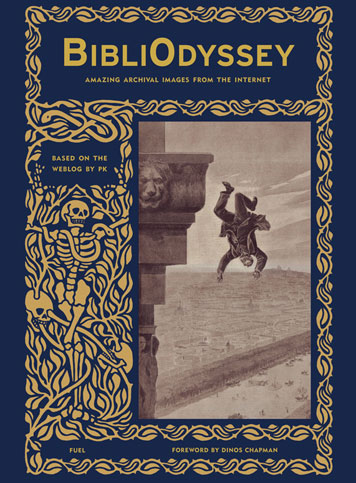
Cover of Bibliodyssey: Amazing Archival Images from the Internet, based on the weblog by PK; designed, edited and published by Fuel
Are graphic design skills transferable? Does being a graphic designer equip a person to do anything other than be a graphic designer? I know half a dozen designers — friends and associates — who are using their professional know-how to launch alternative or parallel careers. I'm not extrapolating a trend here: but there's something in the harsh ecology of contemporary graphic design that is encouraging certain sorts of designers to use their skills, instincts and sensibilities to create alternative ways of earning a living. One of the most interesting examples of this is the publishing venture set up by the British design group Fuel.
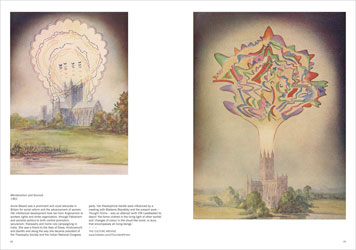
Spread from Bibliodyssey: Amazing Archival Images from the Internet, based on the weblog by PK; designed, edited and published by Fuel
Fuel were the most daring and self-aware of the U.K. design groups to emerge in the post-Brody era. Less fashionable than Tomato or Designers Republic, they had an arty hauteur that made them graphic design outsiders. In the early 1990s it was common to see the three Fuel men staring out of photographs wearing sharply tailored matching pinstripe suits and fuck-you expressions. They eschewed the mateyness of most British graphic designers in favor of a dash of menace backed up an air of calculated detachment. Or to put it another way, they conducted themselves like junior members of the Brit Art movement, a connection that remains active today: on their website they list Tracey Emin, Jurgen Teller and Jake and Dinos Chapman as clients, and their studio is in the same East London street as the home of the dapper Godfathers of Brit Art, Gilbert and George.
Damon Murray, Stephen Sorrell and Peter Miles formed Fuel in 1991 (Miles left in 2004). They produced graphic design for a variety of clients including MTV, Levi's, Diesel and the Sci-Fi Channel, and yet the trio declined to follow the path of growth that so many other design groups chose at that time. Instead they put their energy into producing self-initiated books and films. The most ambitious of these projects was Fuel 3000, a hefty tome that acted as a manifesto for their brutalist, non-ingratiating style. The book was an emotionally glacial mix of images and text that navigated a course through the 21st century media world of instant gratification and glassy-eyed fixation with the surface of things. In twenty years time, Fuel 3000 will be seen as far more emblematic of its era than most of the boosterish eye-candy design books published at the same time.
Fuel's interest in personal authorship had started at the Royal College of Art where their eponymous magazine, with its quixotic use of vernacular motifs and crude default typography, seemed like a rebuke to the seductive design of their style-besotted contemporaries. Yet when Rick Poynor wrote about them in 2000, in an essay entitled "Power to Translate" (reproduced in his book Obey the Giant), he commented "... Fuel certainly didn't regard themselves as exponents of 'graphic authorship' — a term they had not heard until the late 1990s, when they reacted to it in conversation with derisive laughter."
My guess is that the derisive laughter was an admission that Fuel knew — even then — that they were not indulging in pure graphic authorship, rather that they saw themselves as editors. As they told the British journal Design Week in a recent interview, "editing text has much in common with art directing in terms of deciding what to take out and what to leave in, and it's all problem solving, whether its for a client or a personal project."
A talent for editorship has led them to become publishers and establishing Fuel Publishing. As they also told Design Week: "Half of the business now is publishing, so the books have to pay for themselves. Obviously each book is a huge undertaking and financial risk, so there's a rigorous process from the initial idea to the possibility of realization before we develop individual titles."
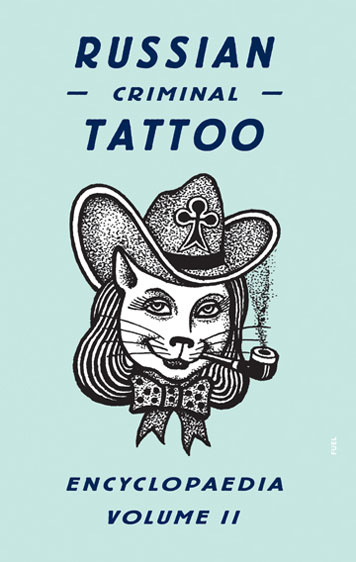
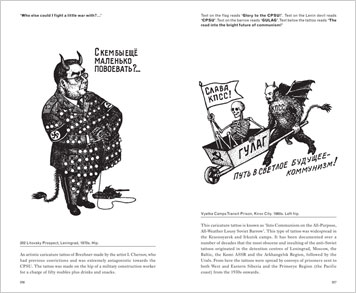
Cover and spread of Russian Criminal Tattoo, Encyclopaedia II, designed, edited and published by Fuel
Looking at Fuel's small, carefully nurtured backlist, it appears that they have entered a new phase. Detached scowling and graphic obliqueness have been replaced by a warmer, less austere sensibility that has allowed them to produce books with surprisingly broad appeal. Fuel's books have a cultural reach that lifts them out of the design ghetto and into the world of book chains and the review pages of broadsheet newspapers. Their two surveys of Russian criminal tattoos have become cult hits; a book on English football match-day programs, from the era before David Beckham and the merging of football and fashion, offers a guide to an ignored strata of British graphic design; and a book pairing Andy Martin and the eccentric "performance poet" and broadcaster Ian McMillan shows what happens when publishers make inspired commissions. Their latest volumes include a return to Russia and a book inspired by an entry they found on Design Observer.
Murray and Sorrell's realization that they possessed the transferable skills and instincts to publish thought-provoking books with editorial depth, has allowed them to create a publishing venture that offers a fresh take on visual culture. It's a venture that their design background — especially their early explorations into graphic authorship — has equipped them well to undertake.
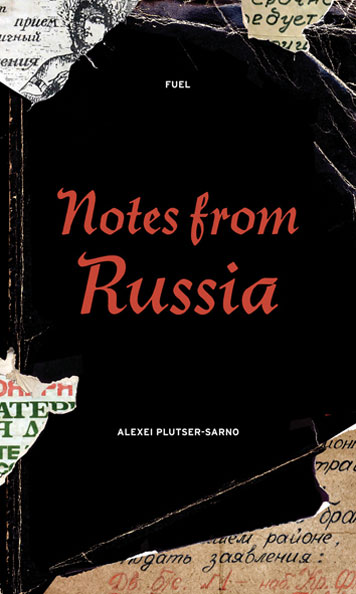
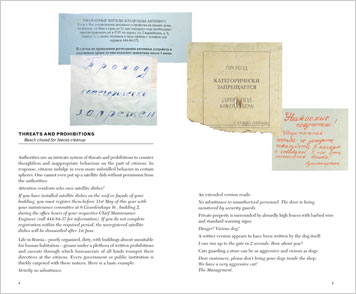
Cover and spread of Notes from Russia by Alexei Plutser-Sarno; designed, edited and published by Fuel


Comments [18]
12.16.07
07:16
Also, John Stone's comment about graphic designers vs. graphic artists is incredibly condescending.
12.16.07
11:30
12.17.07
12:37
How often do we ourselves qualify fellow designers by another skill set? Oh, that guy, he's a great illustrator! She's fantastic with ad copy. His marketing savvy is top-notch. Her coding knowledge saves our butt all the time!
Many of us got into design because we (intentionally or not) realized that our interests were highly varied, and did not seemed to be contained in other, more traditional careers (accountants, lawyers, Jelly Belly taste-testers, etc). So it stands to reason that we will also continue to 'play' outside of the 'traditional' design field. Like I implied in the beginning, I have known too many designers get burned out in our field, but they do often go to other applied arts endeavours. I am always amazed at how many seemed to show a strong fascination for furniture design.
Myself, I have a fast-growing love of photography (and teaching).
12.17.07
04:24
12.17.07
07:53
I'm curious who else other than rabidly curious designers collect these books, because they're not exactly...accessible. I'm thrilled that Fuel has been able to sustain themselves, but who gets into this? Seriously?
As to what the article's ostensible purpose--what else can a designer do to make money--I think its a given. Designers tend to have an interest in numerous things, and if those interests have a revenue-generating component (and most things do), they have the skills to make things. Then success relies on one's ability to sell a product.
If anything, Fuel succeeds because they figured out who their audience is.
12.17.07
12:26
These skills can be transferred into a variety of professions outside of the art world. Lawyers have to gather and transform information into a viable cases. Next they must present this information in a manner that is understandable while delivering the intended message. Both occupations use extremely different mediums yet the end is very much the same.
12.17.07
01:55
12.17.07
02:59
12.17.07
03:53
Aren't there many designers now moving into new forms of authorship that involve a meaningful editorial and publishing role? You piece successfully brings to the forefront a great example, but isn't Fuel, in today's world, only one of many? (This hardly diminishes their accomplishment or the focus of your post.)
Shouldn't this lead to new questions? As one might compare writers, why can't we compare design editors based on the content of their books? In the recent past, the sheer fact of making a book was evidence of authorship. Doesn't the playing field shift and open up new forms of criticism if we compare Kafka Goes to the Movies, to name one of our titles, with D.I.Y. Kids by Ellen Lupton, with Wallace Berman: Photographs by Lorraine Wild, with Russian Criminal Tattoos by Fuel?
To know any of us personally, you would NOT be surprised by our publishing choices. So perhaps the differences are merely choices of interest. I suspect, though, that each is more deeply seeded in a larger design practice and philosophical point of view. So isn't it time that the subjects of our authorship and editorial development be the basis for a discussion? Certainly, Fuel raises these issues with it's far-ranging and eclectic interests.
12.18.07
10:28
I'm sure there are more. But I think the number of graphic designers producing high quality books, properly edited and published to exacting standards, is minuscule.
However, the point of my post was that it seems to be a growing number, and that's worthy of discussion, I'd have thought.
12.18.07
01:55
What's also interesting is that Fuel's content is moving away from obviously graphic design-oriented subjects, even as they muck around in interesting ways with what is contemporary visual culture. This is the reason they are selling books beyond the tribe. Which is your point!
12.18.07
02:31
I appreciate that the books have unique subjects and themes. There are plenty of well designed books, by designers, about design out there. I look forward to checking them out. Thank you.
12.18.07
02:50
12.18.07
10:56
Fuel's work is interesting, but I just wonder: Couldn't it be reviewed and observed without trying to attach to it some clever label, some meaningless sound bite?
12.19.07
06:18
as design driven (or at least, friendly) publications.
Then you get the chris ware books and the many others made by graphic novelists, comic artists, illustrators, chip kidd etc..
I really like "speck" by Peter Buchannan Smith.
01.01.08
09:55
i'm adding in RSS Reader
01.06.08
11:37
01.12.08
10:52